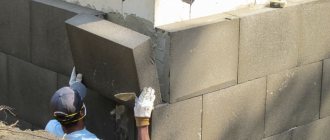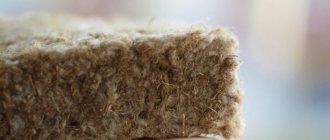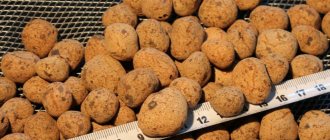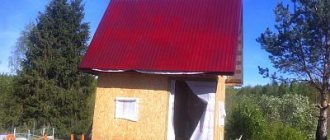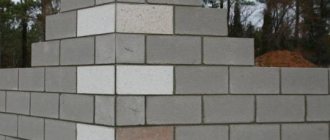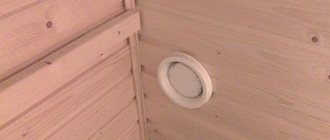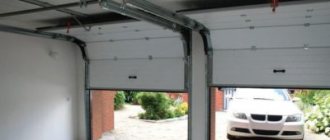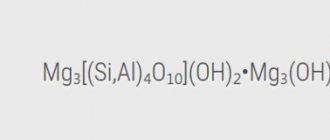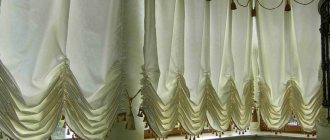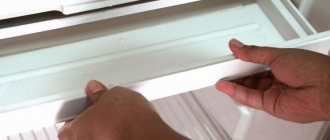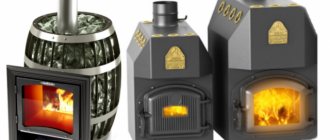The fiber obtained from flax stems is produced for many purposes, including construction. Tow and plumbing linen are long-known types of flax fibers, and linen felt, flax batting and tape tow are relatively new non-woven materials. Linen insulation is a natural building material for protecting a structural element or structure from negative environmental impacts, and maintaining the desired indoor temperature, absorbing sounds. There are special requirements for insulation, the main one of which is considered minimum thermal conductivity.
Why is it necessary to spend time analyzing all the offers on the insulation materials market? Because there are many nuances in choosing the right insulation: in the future, it should significantly reduce heating costs, eliminate heat loss and ensure a comfortable stay in the room. For internal and external insulation of buildings and premises, flax insulation is suitable - organic, environmentally friendly, pliable during installation work and durable material . Flax fiber is valuable for its ability to absorb and release moisture without condensation.
Technological and production aspects
Linen felt and flax batting are made using the needle-punched method. In the first case, the fibers are tangled to bind the felt texture, resulting in a dense fabric without foreign inclusions (there is no nylon, cotton or other substances in the composition). The production of flax wool is based on stitching the catonin flax base with cotton or nylon thread. The density of flax wool is lower than that of linen felt, but according to the standard it should not be less than 500 g/m².
Ecoterm - a modern environmentally friendly insulation based on flax fiber with bicomponent polyester thread in a ratio of 7 to 3 - is bonded under temperature influence into a homogeneous and shape-stable slab.
The main forms of production of flax insulation are in slabs , rolls and mats . The technology for producing linen boards requires the use of starch to glue the fibers together or exposure to high temperatures. To ensure fire resistance, borax is added to the composition and the surface of the insulation is treated. Flax-based thermal insulation in rolls is available up to 160 cm wide. Tape flax tow for insulating wooden houses is made from fiber flax raw materials and is cleaned of impurities using a carding machine. After longitudinal polarization of the fibers, gray flax tow appears as a ribbon 1 cm thick and 15 cm wide .
Selection rules
The main criterion for choosing linen insulation is its quality, which in turn is determined by the following parameters:
- Raw materials. The best option would be to use a material that is made from short fibers and flax tows, obtained by combing long flax fibers. Such processing of raw materials helps remove excess impurities. A large number of them worsens the appearance of products and creates obstacles to achieving the optimal density of the material. In addition, the presence of impurities leads to the destruction of thermal insulation over time.
- Density and thickness of insulation. Their ratio must be taken into account depending on the area of application of linen thermal insulation. For a log house made of profiled timber, in which the crown joints are made with high precision, a material with a density of 250-300 g/m2 and a thickness of 2-3 mm is suitable. If rounded logs are used for walls, these figures increase respectively to 500 g/m2 and 4-5 mm. To insulate houses made from ordinary timber, insulation with a density of 700-800 g/m2 and a thickness of 8-10 mm is used
- Uniformity of material density. It should not be more than 10%. Otherwise, the sealing of the cracks between the beams or logs in the log house will be uneven.
When choosing insulation for your home, you need to take into account all its advantages and disadvantages, because future comfortable living will depend on this.
- First you need to pay attention to some parameters that play an important role when choosing insulation, such as:
- You need to pay attention to the fact that the material does not have any other impurities, because they will only worsen its appearance and also reduce its service life. Impurities do not give the insulation the density needed for walls;
- When choosing between rolled linen and tow, you need to pay attention to where the material will be used. For example, linen wool comes in rolls of different widths, so it is very convenient to use it for insulating the inside of walls, floors, ceilings, partitions, even roofing structures. But its price is very high. Tow made from flax is much cheaper and is produced in a ribbon fifteen centimeters wide. It also has a loose and flexible structure, which allows it to be both compressed and stretched if necessary. Tow is suitable for sealing cracks in windows and doorways;
- When choosing ecowool, you need to know that this is the safest cellulose insulation. It contains eighty-one percent recycled wood, the remaining nineteen percent being antiseptics.
The most popular manufacturers of linen thermal insulation are two companies:
- Ecotherm (Belarus). Ecoterm universal linen insulation is suitable for almost all structures, with the exception of its use as thermal insulation for cement screed. The material is produced in slabs that are quite elastic. Fitting tightly to the base, they provide it with excellent insulation. The size of the slabs is 1200x600x50 mm, there are 12 pieces in a package, which corresponds to 8.64 m2 of coverage. Price per package - 1700 rubles.
- TermoLEN (Russia). This brand produces linen insulation in the form of slabs and rolls. Pack of 9 pcs. slabs Rolled inter-crown insulation ThermoLEN does not contain toxic impurities, it is environmentally friendly and can be used for insulation of frame houses.
Ecoterm - modern thermal insulation from Belarus
The eco prefix was chosen for a reason: the material really does not contain potentially harmful impurities - phenols, formaldehydes, etc. This type of insulation based on flax and polyester is widely used in “green” technologies in the construction of houses. Ecotherm is designed for thermal and sound insulation of unloaded building structures, and it can be mounted on vertical and horizontal surfaces. The slabs are elastic, the fiber springs, fills voids, and fits tightly. The material is suitable for installation between rafters, in frame spaces, between open beams - anywhere where additional fasteners are not required.
In terms of technical characteristics, Ecoterm is superior to other types of insulation in some areas (see table).
| Characteristics of Ecoterm | Indicators |
| coefficient of thermal conductivity | from 0.038 to 0.04 W/(m K) |
| sound absorption level | 0,98 |
| water permeability | absorbs liquid well, dries quickly, does not change structure |
| vapor permeability coefficient | 0.4 mg/(m h Pa), suitable for insulating baths and saunas |
| density | from 20 to 34 kg/m³ |
| temperature tolerances | minus range is not limited, no more than +160°C |
| fire resistance | fire retardant treatment |
| chemical interactions | Ecoterm does not react to construction chemicals |
| biological factors | the material does not rot, is not a medium for microorganisms, fungus and mold |
| environmental friendliness | does not emit harmful substances when burning, safe for allergy sufferers |
| life time | more than 60 years under manufacturer's warranty |
Specifications
The most important indicator for assessing the quality of insulation is its thermal conductivity. For linen material it is about 0038 W/m*K, which is very close to mineral and fiberglass wool.
Important! Linen fibers allow you to retain heat inside, not let it through, and make the room comfortable to live in.
Other material characteristics:
- Sound insulation coefficient – 0.84-0.98. The indicator is higher than that of mineral wool by 30%. This means that a house with such insulation will be reliably protected from extraneous noise.
- Vapor permeability – 0.4 mg/m*h*Pa. Linen is a breathable raw material, it does not lead to condensation on the walls, does not cause the development of mold and mildew, and allows moisture to freely leave the premises.
- Density – 15-80 kg/m³ (depending on the specific type of insulation). The average density of the slabs is 30-32 kg/m³.
- Fire resistance – G1-G2. The fiber burns, so it must be treated with fire retardants. The finished material does not support or weakly supports combustion, while the smoke released in small quantities is non-toxic.
- Service life – 60-75 years. It should be noted that the material can be used at temperatures up to +160 degrees and is not afraid of temperature changes.
Features of flax insulation
Flax is an annual bast crop with thin fibers (20-50 pieces per stem). In turn, the fibers consist of porous, up to 150 cm long, individual “hairs” (10-40 each), enclosed in a flexible shell. Thus, a flax stem can be fluffed into 200-2000 simple cellular structures, which perfectly retain heat and absorb sound waves traveling through the air.
In its pure form, flax cannot be used for insulation - it cakes quickly due to the presence of a hard trunk and is susceptible to rotting. Therefore, primary processing in the form of creasing and scuffing is necessary to free the fibers from the fire.
However, even in this form the fibers quickly cake. Therefore, synthetic substances (sintepon) are added to them, which are responsible for the elasticity of the fabric and its volume. To combat putrefactive microflora, a heat treatment method is used, as a result of which all microorganisms die - the material becomes biologically pure. But this does not mean that flax will not begin to deteriorate over time. Two factors contribute to this:
- starch (an excellent base for the development of pathogenic microorganisms) - added to mats for gluing fiber;
- constant dampness in a room with flax insulation.
In addition, we should not forget about the high degree of flammability of flax fiber, which requires treatment of tapes, canvases and mats with fire retardants. These points need to be taken into account when purchasing linen insulation.
Is it really as environmentally friendly as they say?
The cost of flax insulation is very high. Therefore, to promote a product on the market, you need features that should stimulate sales growth. Among them is the absolute environmental friendliness of the product.
This advertising move is confirmed by the quality mark awarded by the EU Commission to environmentally friendly building materials. In this regard, we note that for the most part all construction products made from flax from Western companies have this mark. What about in Russia? After all, we buy mainly domestic products.
Let's try to find out whether linen insulation is really environmentally friendly. For analysis, it is necessary to know the composition of the insulation. And here questions arise. If boron salt was used as a fire retardant, and starch is the binder, then there is no doubt about the environmental friendliness of flax insulation.
But to improve consumer characteristics, chemical binders are increasingly being used instead of starch (in some brands up to 30%). In this case, there is no need to say that the products are natural, although manufacturers claim the opposite.
Watch a video about flax insulation
• Environmentally friendly composition, in which the main component occupies up to 90%. The remaining part is a binder product, which is starch or polyester.
• Long service life, reaching 50 years.
• The properties of the material have excellent vapor permeability, which allows the walls to “breathe”. This prevents the formation of condensation, the accumulation of a humid environment in the room and, as a consequence, the formation of microbiological processes.
• The low weight of linen insulation eliminates overloads on the supporting structure of the building.
• Even a beginner in construction can handle the simple installation method.
• The material is resistant to temperature changes. This does not affect its quality in any way.
• Thermal conductivity indicators are comparable to those of mineral wool and expanded polystyrene.
• Safety class G1 indicates that the linen structure does not support the combustion process.
• The insulated design increases noise insulation characteristics due to the use of linen mats.
• Linen does not cause allergies.
Advantages and disadvantages
All building materials have their advantages and disadvantages. Linen is no exception. According to reviews on the forums, the advantages of this type of insulation include:
- high thermal insulation properties - the thermal conductivity coefficient is only 0.03-0.040 W/(m*K), which is only slightly inferior to polyurethane foam, is on the same level as polystyrene foam and is superior to mineral wool;
- durability, confirmed by practice - the service life is 50-100 years (manufacturers indicate the figure 50, but in practice, when dismantling wooden buildings, linen insulation was in working condition for 75-100 years);
- vapor permeability, allowing the walls to “breathe”, removing excess moisture from the room to the street;
- increased hygroscopicity, which on the one hand is a negative property - it gets wet quickly, on the other hand, flax-based insulation, like wood, regulates the humidity regime in the room: when there is an excess, it absorbs steam molecules, when there is a deficiency, it releases, and dries very quickly. The big advantage of this property is that no vapor barrier is required. Consumers do not need to worry about frequent but short-term wetting of flax, because... after drying, all characteristics are fully restored. The only thing that can happen is darkening of the fibers;
- possibility of installation by surprise, without the use of glue and dowels. Such installation became possible after manufacturers began to make mats slightly larger in width and length (2.5 cm) than the standard dimensions of the lathing cells or the distance between the lags (beams);
- environmental safety, not only in relation to homeowners (not an allergen, does not emit harmful and toxic substances when heated and burning), but in general flax absorbs CO2 when grown, is completely decomposed, can be reused, and is a renewable resource;
- good soundproofing characteristics, but only sound waves traveling through the air are absorbed. Linen is practically useless against structural and impact noise;
- simple and safe installation - all work can be done with your own hands without the use of special clothing. The problem only arises if the mats need to be adjusted to size - flax fiber does not cut well.
Disadvantages of linen insulation that are hushed up
Much has been written about the advantages of this building material. On any forum there is a list of advantages and positive qualities. Here we will talk about the disadvantages of linen insulation, because... the buyer must know what he is shelling out his money for.
There are not many shortcomings, they are not critical, but they need to be voiced. Preferably a list.
- Price. It immediately repels you and forces you to look for alternative options. In fact, paying about $1.6/m² (on a roll 9000×1000×40 mm) is very expensive.
- The material tends to absorb moisture.
- Linen insulation absorbs odors just as quickly and retains them for a long time.
- The touted environmental friendliness of the material is very relative. Firstly, you should not believe advertising like “pure flax!” Has anyone been interested in flax production in Russia? Is it enough for the insulation to be sold on such a wide scale? But flax is used not only for the production of insulating mats. Therefore, the product is diluted in production mercilessly with anything. For example, the same illiquid stock, the so-called “short” flax fiber, i.e. residues from the production of ropes, etc. Secondly, such insulating boards still need to be impregnated with various kinds of water-repellent and fire-retardant reagents. These actions do not improve the environmental friendliness of flax fiber.
- A significant disadvantage of linen insulation is the fact that all sorts of rodents like to make their burrows and passages in it. The problem can be solved by getting a good cat, but still...
- When choosing insulation, you should think about the conditions of its installation and operation. If you compare ecowool and linen insulation according to these parameters, then the disadvantage of the latter will be highlighted quite clearly. Why? the fact is that the same ecowool is sprayed. But mats and insulation boards made of flax fiber have to be joined, adjusting them to a uniform surface. Naturally, differences, seams and cold bridges cannot be avoided.
Perhaps these are all the main disadvantages of linen insulation.
But the consumer should still know about them.
The more you know, the better you sleep.
Extra knowledge has never done anything bad to anyone. But their shortage...
Leave a reply Cancel reply
Categories
- Prefabricated houses
- Construction calculators online
- Frame (Canadian) houses
- Panel (panel) houses SIP panels
- Siding
- Houses made of timber
- We can do it ourselves
- Weights
latest comments
- Artem on Customer reviews about sound insulation Sonoplat Combi
- Vyacheslav on Disadvantages of onduvilla in reviews
- Sergey on Which metal tile is best for a roof - reviews, observations, videos, tips
- Rita on Bathtub made of cast marble, reviews, disputes, conclusions, advice
- Alexander on the post Disadvantages of onduvilla in reviews
Types of insulation
The construction industry offers consumers several types of linen insulation:
- tow;
- felt (linen);
- batting (linen);
- mats (slabs).
Tow. Tow is a waste from the processing of flax and other bast crops (hemp, jute, etc.), resulting from the scutching process. Consists of coarse, short, tangled fibers, heavily contaminated by fire. It has been used in construction since the beginning of flax cultivation to produce textiles.
It is mainly used for inter-crown insulation of log houses. But it can be found in the openings of doors and windows (instead of polyurethane foam), as well as in the joints of slabs of the main insulation, for example, polystyrene foam.
Felt. The definition of “felt” has nothing to do with linen insulation, because the word arose to define a dense non-woven material made from wool. But manufacturers of a similar material made from flax fibers could not come up with an independent name for dense non-woven tapes. So they began to call their products linen felt.
The product is made from long fibers using needle-punched technology - this is when special barbed needles form a fabric, holding it together with its own fibers. Used as inter-crown linen insulation.
Batting. Batting is another type of non-woven fabric. It differs from felt in that nylon or cotton thread is used to hold the flax fiber layer together. It is used in the same way as felt, but with one difference: it is laid in two layers. This requirement is explained by production technology - the insulating tape has a low density. Total about 500 g/m2.
Mats. Insulating mats made from flax fiber are produced using starch, which serves as a binder between the fibers. In many industries, mats are additionally stitched with silk or cotton threads. Thermal insulation material is produced in the form of rolls and slabs 5 and 10 cm thick. It is used to insulate various building structures.
Attention: in materials about linen insulation, another type is called: flax-jute. However, using the term “flax-jute” to define insulation as an independent type consisting of a combination of flax and jute fibers is incorrect. It would be more correct to say that other types of bast crops can be added to flax fibers. After all, the so-called “flax-jute” insulation is produced in the form of felt, batting and mats. Therefore, it is impossible to say that this is an independent type of heat insulator.
Installation technology for linen insulation
Linen insulation in the form of tapes, felt, slabs or tow is ideal for thermal insulation from the inside and outside of walls, ceilings, floors and partitions. Let's consider in detail the options for its use.
Preparation for thermal insulation with linen insulation
Before starting to insulate an already built house, it is necessary to carry out simple preparation of the surfaces subject to this procedure. This will help increase the effectiveness of the insulation and the lifespan of the building.
First of all, dirt and dust should be removed from surfaces; special attention should be paid to recesses, crevices and bottlenecks. If dirt has become embedded in the wall material, it should be wetted with water and, after thorough cleaning, allowed to dry for the required time.
Wooden surfaces should be inspected to identify areas affected by fungus or insects. If necessary, they should be thoroughly cleaned. If large cracks or crevices are found, you need to caulk them with cord or tow.
It is recommended to complete the preparation of the log house walls by impregnating them with an antiseptic or antifungal agent that can penetrate to a sufficient depth inside the wood.
To prepare linen material for work, you will need a knife and mounting brackets made of galvanized metal. To save time, the insulation can be cut through the packaging using a disk. In addition, it is convenient to cut with special knives that have a wave-shaped sharpening, especially double-edged ones. A hand saw, a small fine-toothed band saw, or even a regular bread knife, as long as it won't bend, can also be used for this purpose. The insulation, which has a thickness of up to 50 mm, can be easily cut with tailor's scissors.
Due to its elastic structure, linen insulation does not crumble during processing and maintains smooth edges. To obtain an even cut of the material using a hacksaw, you need to slightly press down the plate with a board and make a longitudinal cut.
Laying linen insulation boards
Before installing linen insulation in the form of slabs, the necessary measurements should be taken. In order for the thermal insulation elements to fit securely together, it is necessary that the distances between the profiles be 10-20 mm less than the width of the slabs. Based on this calculation, it is recommended to adjust them.
In this case, the insulation will completely fill the space intended for it and will be securely fixed in the enclosing structure, eliminating the need for additional fixation in any way. Correct calculation will prevent the formation of gaps between the coating elements and the violation of thermal and sound insulation at their junctions. It is also necessary to ensure that the insulation layer is not disturbed in the places where it adjoins the walls.
The standard slab width of 625 mm is perfect for installing piece products in frames with distances between guides, rafters or posts of 600 mm. In all other cases, the linen insulation must be trimmed. Its thickness is selected based on the width of the profile. So, for an interior partition, when laying thermal insulation of 50 mm, the width of the lathing profile should also be 50 mm.
If the insulation areas have an intricate configuration, allowances of 10-20 mm should be made in the material according to the shape of the cells so that the thermal insulation fits tightly into the prepared areas.
Working with linen boards is very convenient. Natural fibers and adhesive give the material elasticity, and it retains its shape perfectly. Installation of insulation should be carried out between the rafters or joists, without fear of its fixation. Convenient sizes and light weight of linen slabs allow you to install them yourself.
To install linen thermal insulation on inclined surfaces, it is necessary to install additional sheathing. It will provide a ventilation gap to quickly remove condensation when the humidity level in the building envelope increases. This promotes better heat retention.
The slabs should be laid close to each other. At the same time, at the joints, the fibers of the flax insulation intertwine, take an optimal position and create reliable sound and heat insulation. It is important to carry out the installation so that the material does not block the ventilation ducts and does not come into contact with heating devices.
Installation
Installation of slabs begins with adjustment and measurements. The joining will be reliable if the width of the slabs is 10-20 mm greater than the distance between the beams and joists: then the material will fill the space and be securely fixed without fasteners, which will help to avoid gaps and deterioration of the insulation.
The insulation layer should not be interrupted in the area adjacent to the wall.
cutting
After measurements, the slabs are cut. By the way, cutting does not cause problems - the material does not break or crumble, maintaining clear edges. It is better to use special knives with wave sharpening, an electric hacksaw or a small band saw. An ordinary bread knife will also work if it does not bend and is thick enough, as well as a hand saw with fine teeth.
When the insulation is 5 cm thick, it can be cut with large sewing scissors. Cutting can also be done through packaging. If you decide to work with a power tool or a hacksaw, then the plates can be placed on a stand for convenience. For an even cut, the slab should be lightly pressed down with a board and cut along it.
Preparing eco-heating for installation
Laying eco-insulation does not require any special skills or abilities, protective equipment or installation tools. The width of the slabs (about 625 mm) is suitable for the standard distance between rafters and floors, which usually does not exceed 600 mm. Otherwise, you will have to trim the slabs, fortunately this is not difficult. For reliable joining there must be a margin of 20-25 mm, then the material will be securely fixed in the structure and there will be no gaps in the laying areas.
The thickness of the slabs is selected depending on the thickness of the frame racks. If the stand is 50 mm, then the slab will be the same thickness. As a last resort, you can use several plates.
The eco-insulation board is selected depending on the need for sound insulation
The slabs are easy to cut, and practically do not crumble or break. For cutting, special knives are used: with a double-edged wave sharpening or a knife for insulation. You can take an electric hacksaw, a grinder, a band saw, in a word, everything that is at hand.
Criteria for choosing linen insulation
When choosing the optimal insulation, you must rely on several criteria. First, you need to take into account factors indicating the quality of the product. Secondly, you should select the type of material that will suit your needs. Features of choosing flax insulation:
- The main indicator of quality is the availability of certificates of compliance with sanitary and epidemiological requirements. Ask the seller to provide you with all necessary documentation.
- The color of linen insulation ranges from gray-greenish to brown.
- The structure of a high-quality heat insulator is strong and elastic, and does not crumble.
- Pay attention to the packaging of the material - it must be intact so that direct rays of the sun and moisture do not fall on the insulation.
- A universal flax insulation material is considered to be a material based on short fiber and tow. It is cleared of impurities and fractions. The presence of a large number of impurities significantly impairs the thermal insulation qualities and strength.
- If you plan to insulate a house made of profiled timber, then choose a heat insulator 2-3 millimeters thick and with a density of up to 300 grams per cubic meter. For insulating a house made of rounded logs, material up to five millimeters thick and with a density of 500 grams per cubic meter is suitable. Buildings made of timber must be insulated with insulation up to 10 millimeters thick and with a density of up to 800 grams per cubic meter.
- Linen wool is convenient to use for insulating walls, ceilings, roofs, floors, and ceilings. Tow is suitable for sealing roof gaps and cracks in openings. Choose felt if you need to insulate a house made of profiled timber or calibrated logs.
Criterias of choice
When choosing among dozens of models of thermal insulation materials presented on the market in Moscow and other cities, you should be guided primarily by their purpose. It must meet the needs of the consumer. In addition, the following parameters must be taken into account:
- availability of a certificate of conformity;
- dense, non-crumbling structure, the material should not fray much;
- homogeneous structure, absence of foreign inclusions: large plant parts, chips, sawdust, debris;
- the color, depending on the impregnation, can be gray-green or brown;
- the integrity of the packaging ensures that the material is stored in accordance with the manufacturer's requirements, without exposure to sunlight and humidity.
To insulate buildings made of profiled timber, ensuring a minimum gap between mating surfaces, you will need linen tape no more than 3 mm thick with a density of 0.3 kg/m3.
When choosing linen insulation, it is important to pay attention to the presence of a certificate
For rounded logs that allow large gaps, a 5 mm tape with a specific weight of 0.5 kg/m3 is suitable.
Conventional timber has maximum clearances. To reliably insulate them, it is better to choose a 10 mm tape with a high density: 0.8 -1.0 kg/m3.
Linen batting, supplied in rolls, is well suited for insulating ceilings and walls.
Interventional gaps, door and window openings, and various cracks should be caulked with flax tow. It must be driven tightly into the cracks and covered with strips or decorative trim.
Price and manufacturers of flax insulation
There are many manufacturers of flax-based thermal insulators both in Russia and in neighboring countries. Give preference only to those that have proven themselves and have positive reviews. Among them are the following companies:
- HORSE
. Russian company producing flax insulation. As a rule, it specializes in the production of slabs. It grows raw materials on its own plots and uses innovative technologies in its work. It produces linen boards under the Ecoteplin brand. This is a universal heat insulator. There are also specialized products - “RosEcoMat Wall”, “RosEcoMat Roofing”, “RosEcoMat Floor” and other names. The average price is 5,500 rubles per cubic meter. - Artemis
. A new Russian company that produces Val Flax linen boards using German equipment. In addition to flax, they contain a semi-synthetic fastening component. The price of the package is about 1200 rubles. - Isolina
. Company from Finland. Works in collaboration with the research center, constantly improving the technical characteristics of products. It produces all types of inter-crown and tile insulation based on flax. The price per cubic meter is on average from 4,500 rubles.
Production of linen insulation
- home
- Articles on the use of natural insulation materials
- Production of linen insulation
Modern production is oversaturated with synthetic materials due to the active development of the chemical industry, so natural components in products are becoming increasingly in demand.
Particular attention is paid to the naturalness and environmental friendliness of those materials that are intended to serve for a long period.
Natural flax slabs, a technologically advanced production material that meets all environmental and safety requirements, are designed for insulation and sound insulation of both external and internal perimeters of buildings.
According to the production method, linen insulation is divided into:
- 100% flax fiber, the particles of which are glued together with starch-containing components and treated with borax for fire resistance;
- 85% flax fiber and 15% binder bi-component fiber (lavsan).
The first group includes insulation materials Ecoteplin and Izolna. The dimensions of the slabs are 1000x625x50/100 mm. The second group is represented by RosEcoMat, Akotherm Flax, ThermoLyon, Isolina. Plates of such insulation are slightly narrower in width, standard sizes are 1000/1050x600x50/100 mm. Lenofiber insulation is distinguished by:
- environmental friendliness and harmlessness;
- reliable thermal protection;
- high sound insulation characteristics;
- high vapor permeability;
- ease;
- durability.
In addition, some linen insulation is treated with borax , which reduces the degree of flammability. The convenient rectangular shape allows the mats to be mounted in even rows, while they fit tightly to the surface of walls, floors, partitions and ceilings, leaving no gaps or cracks. The service life of flax insulation is 60-70 years, during which they do not lose their functionality and basic characteristics.
A worthy alternative to linen boards is insulation produced by the thermal bonding method: these are bonds of natural fibers into a single mass using additives and heating from other natural materials:
- jute;
- hemp (hemp fiber);
- eelgrass (sea grass),
- or a mixture of these materials with each other, as well as flax with these materials, which allows you to fully use the best qualities of all components.
Such insulation materials include: Naturi, Flaxan, RosEcoMat Kenaf, RosEcoMat Zostera, Jute-Ekomat. Fibers of jute, hemp and eelgrass are particularly stiff, durable and wear-resistant. Taking into account the natural component of these materials, we can say with confidence that products based on these plants will protect against noise, moisture, temperature changes, while remaining environmentally friendly and durable.
Brief instructions for installing linen insulation
Working with natural insulation is very simple. The tools you will need are scissors, a knife, and brackets for fastening. We carry out installation according to the following scheme:
- We take measurements if tile or roll material is used. If you plan to install it on a horizontal surface, then you do not need to use fasteners.
- If you need to cut the insulation, take a regular knife or scissors. In this case, it is not even necessary to first take it out of the packaging.
- If you are insulating a wooden building during the construction process, then we cut the material into strips of the required length and width and lay it between the logs. We join the tapes and fasten them with staples.
- If you are insulating the joints of an already constructed building, you should use a chisel to push the tow or tape deep into the inter-crown space.
- Plates and sheets of linen thermal insulation are perfectly fixed even without fasteners. To do this, we install them spaced between the rafters or joists.
- If the surface has a slope, then we additionally equip the sheathing to allow moisture to erode out.
- If the building will be exposed to moisture, it is recommended to protect the insulation with a vapor-permeable membrane. We overlap it by 10 centimeters and seal the joints with tape.
Watch a video review of flax insulation:
Linen insulation is excellent for insulating so-called “green” or “eco” houses built of wood. They are environmentally friendly, have good technical characteristics and are durable. Also, flax-based tile material is used for insulation of ordinary brick and concrete buildings.
Insulation of the floor with linen underlay.
This is perhaps the easiest way to insulate. The underlay is laid on a subfloor, concrete or wood, and a finished floor (parquet board, laminite, or carpet) is mounted on top. Linen underlay is ideal as insulation for floors under linoleum. It resists the cold quite effectively, eliminating the discomfort of a cold floor. The linen backing has the highest heat and sound insulation characteristics in its class.
In terms of thermal insulation indicators, it is 4 times superior to cork substrate, and in its efficiency it is second only to heated floors, which consume a lot of energy resources.
Floor insulation using joists
The most common, simple, and effective method is to insulate the floor using joists. It applies to both floors on the ground and those built on concrete slabs.
Insulation of floors using joists on the ground
Thermal insulation work begins with soil compaction. Then they make a backfill of crushed stone. Next, brick columns are installed in increments of 2 * 0.5 m. Waterproofing is laid on the columns, then wooden logs. Optimally, a log section of 120, 150 or 200 x 50 mm is sufficient. At the bottom of the joists, support bars are placed on the sides, on which a roll of boards or OSB boards is laid. The insulation is placed between the joists.
Method 1 Insulation with Zhivaizol construction insulation. The floor insulation is laid between the joists, on a wooden slab, in two layers, 100 mm high, with overlapping seams. Inter-crown insulation is laid on top of the floor beams before the floor is installed, which significantly reduces creaking.
Method 2 Insulation with flax fiber. The fiber is developed manually and laid between the logs on a wooden roll, to the entire height of the beam, at the rate of 8 kg of fiber per 1 sq.m., with a beam height of 200 mm. Inter-crown insulation is laid on top of the floor joists, before installing the subfloor, to reduce squeaks. The advantage of this method of insulation, along with high environmental friendliness and durability, is the price.
Linen insulation
The main and indisputable advantage of flax insulation is its environmental safety, since no adhesives, resins or other toxic additives that are dangerous to humans are used in production. Linen-based insulation has excellent thermal insulation properties (0.036 - 0.038 W/m*K) due to a balanced combination of density and porosity. In addition, it is an excellent noise absorber (NSV-211). The useful life of flax insulation is at least 75 years. The material does not lose shape or settle, and is resistant to mold and rot.
Linen insulation is able to absorb (absorb) excess moisture in the room, and when there is a shortage of it, remove it outside without any loss of thermal insulation properties, thereby ensuring the maintenance of an optimal and comfortable microclimate in the house.
Thanks to a combination of unique properties, flax insulation meets all the requirements of modern low-rise construction in the context of heat and sound insulation: - pitched roofs and attics; — external and internal walls; - interior partitions; - floors, ceilings, ceilings.
| External wall | Load-bearing partition |
| Non-load-bearing partition | Roof |
| Interfloor ceiling | Basement ceiling |
Installation of linen insulation is very simple and does not require special professional skills. You will not need any personal protective equipment, because flax is absolutely safe and does not cause allergies. Thanks to the natural antiseptic properties of flax, this natural insulation functions as a biofilter, purifying the air, absorbing odors and inhibiting pathogenic microflora. This unique ability of the material allows you to make the room as comfortable as possible for living.
All the linen insulation we present is of excellent quality, and we are pleased to invite you to visit our showroom to select and buy the linen insulation you like, and we will also help you choose hydro-wind protection , a vapor barrier and environmentally friendly board materials for cladding the thermal contour of house structures .
Unique properties of flax
Against the backdrop of the currently pressing issue of environmental safety and the preservation of a favorable environmental situation, the widespread use of natural building materials is gaining increasing popularity. A striking example of this is linen insulation, which has gained particular trust among house builders.
The unique properties of flax were confirmed already at the stage of formation of human civilizations! For example, the world-famous Christian relic - the Shroud of Turin, in which the body of Jesus was wrapped - is linen, and in ancient Egypt, mummies were wrapped in it.
Flax materials were widely used in Europe in the 19th and 20th centuries. The intended use was focused on the treatment and prevention of various diseases, be it fever, paralysis or asthma. In addition, during the First World War, and subsequently the Second, linen fabric was used to bandage open wounds, stop bleeding, and as a disinfectant and hypoallergenic agent. Currently, in surgery, linen thread is also used to apply internal sutures, which is not rejected by the soft tissues of the body and dissolves over time.
For a long time, scientists have been researching the antiseptic properties of flax fiber. The leaves and stems contain linamarin glycoside and silicic acid salts, which suppress the development of pathogenic bacteria, fungal colonies, and block the development of viral diseases. Indicative results were obtained by the Ministry of Health of the Republic of Belarus. During the experiments, it was revealed that the antiseptic property of flax stimulates the body to more intense blood circulation, thereby reducing its fatigue. In addition, as a result of comparative studies, an increase in the production of immunoglobulin A in the blood was established as a result of sleeping on linen sheets.
In the late 90s, the Central Research Institute of Integrated Automation of Light Industry conducted fundamental research into the physical properties of linen fabric, such as air and vapor permeability, electrification, and thermal conductivity. It was revealed that flax fibers have a low level of static electricity and optimal characteristics of moisture absorption and release. An additional advantage of linen material is its ability to absorb ultraviolet and electromagnetic radiation. Among other things, the fact of a decrease in radiation levels has been experimentally confirmed. Therefore, flax insulation, due to its unique set of properties listed above, is widely used in house construction.
Rules for choosing linen insulation
The main criterion for choosing linen insulation is its quality, which in turn is determined by the following parameters:
- Raw materials
. The best option would be to use a material that is made from short fibers and flax tows, obtained by combing long flax fibers. Such processing of raw materials helps remove excess impurities. A large number of them worsens the appearance of products and creates obstacles to achieving the optimal density of the material. In addition, the presence of impurities leads to the destruction of thermal insulation over time. - Density and thickness of insulation
. Their ratio must be taken into account depending on the area of application of linen thermal insulation. For a log house made of profiled timber, in which the crown joints are made with high precision, a material with a density of 250-300 g/m2 and a thickness of 2-3 mm is suitable. If rounded logs are used for walls, these figures increase respectively to 500 g/m2 and 4-5 mm. To insulate houses made from ordinary timber, insulation with a density of 700-800 g/m2 and a thickness of 8-10 mm is used - Uniformity of material density
. It should not be more than 10%. Otherwise, the compaction of the cracks between the beams or logs in the log house will be uneven.
The most popular manufacturers of linen thermal insulation are two companies:
- Ecotherm (Belarus)
. Ecoterm universal linen insulation is suitable for almost all structures, with the exception of its use as thermal insulation for cement screed. The material is produced in slabs that are quite elastic. Fitting tightly to the base, they provide it with excellent insulation. The size of the slabs is 1200x600x50 mm, there are 12 pieces in a package, which corresponds to 8.64 m2 of coverage. Price per package - 1700 rubles. - ThermoLEN (Russia)
. This brand produces linen insulation in the form of slabs and rolls. Pack of 9 pcs. slabs Rolled inter-crown insulation ThermoLEN does not contain toxic impurities, it is environmentally friendly and can be used for insulation of frame houses.
How to choose high-quality flax-based insulation
Here are the criteria by which the quality of linen insulation should be assessed:
- Raw materials. The most acceptable option is short fiber No. 2-6 plus flax toils after using a carding machine. Any impurities, for example, sackcloth or nylon, over time lead to the destruction of thermal insulation, a decrease in density, and deterioration in appearance.
- The density of flax insulation - the denser the material, the better the quality . Experts also take into account the ratio of density and thickness of the insulating layer. Please note the indicators given in the table are acceptable for different types of houses.
| House type | Insulation thickness | Insulation density |
| from profiled timber | from 2 to 3 mm | 250-300 g/m² |
| from rounded logs | from 4 to 5 mm | 500 g/m² |
| timber house | from 8 to 10 mm | 700-800 g/m² |
- To properly seal the cracks, it is necessary to maintain uniform density of the layer. The parameter should not exceed 10%.
When it comes to choosing between different types of linen insulation, we recommend understanding their differences based on your needs. Thus, the dimensions of tow cannot exceed 15 cm in width, but it is loose and flexible, pliable for manual manipulation: it can be crushed, stretched, compressed. Linen batting is more expensive than tow , but there is a large selection of tape widths, and this flax-based material is universally suitable for any type of wooden house. If you choose modern Ecoterm, you will receive a material that is easy to install and resistant to deformation , but its cost is higher than its analogues.
Useful: Fasteners for a frame house – what to choose?
Which one to choose?
When purchasing warm clothes, you need to imagine the properties of their insulation. In addition, it is important to know how long it will last and what problems you may encounter during operation.
Sintepon
sintepon-1
sintepon-2
Lightweight, voluminous, inexpensive material for many years was the only synthetic insulation for winter and demi-season items. It is made from polyester fibers in two ways: by gluing the fibers or by heat sealing. The first method produces a non-ecological product, while the second produces a short-lived product. Sintepon is 4 times thicker than Isosoft, loses volume after washing, and quickly falls off. In addition, the body in synthetic clothing does not breathe, outer clothing does not retain its heat. It is not suitable for severe frosts.
Thinsulate
thinsulate-1
thinsulate-2
The warmest and most expensive synthetic material. Its structure consists of extremely thin fibers. When creating Thinsulate, American scientists tried to replicate the design of the best down of the northernmost duck - the eider. The resulting insulation surpassed the natural original. Thinsulate is 1.5 times warmer than natural down. Thin, flexible, lightweight material is used to make not only suits for extreme professions - astronauts or polar explorers. It makes wonderful fashionable clothes. Thinsulate has a three-dimensional fiber configuration, it quickly restores its shape and does not deform when washed. This is the only synthetic material that can withstand machine washing at 400C and spinning at 1000 rpm.
Holofiber
hollofayber-1
hollofayber-2
This patented trademark is essentially a type of padding polyester, but differs from the latter in its excellent consumer characteristics. Holofiber insulation provides warmth at air temperatures down to -25°C. It is environmentally friendly, has low density and light weight. It holds its shape well, but is slightly flexible. It is suitable for sewing sportswear, but it is unlikely to make a fashion item. All characteristics are similar to Isosoft, but differ from it in lower cost.
Goose down
gusini-puh-1
gusini-puh-2
In terms of heat-protective properties, this insulation is close to Isosoft, but it belongs to natural materials. Down fibers are extremely mobile relative to each other. This causes difficulties when washing and drying. The down filling absorbs moisture, and in humid weather it becomes heavier and does not warm well. In addition, natural material can become a breeding ground for mites and cause an allergic reaction.
The number of manufacturers of linen insulation is growing!
The number of manufacturers who have chosen flax as a raw material for thermal insulation materials is growing! What could this lead to?
Not so long ago, the choice of buyers was not the widest. And, as a rule, it fell on a well-known brand with the simple name “Ecoteplin”. Novosibirsk production pleased customers with quality and affordable price. There was slight competition from “Vall-Flax”, which had a slightly different composition, and “Termolyon” from a Belarusian manufacturer, which was cheaper but less dense. Rosekomat was also consistently available.
Over time, Ecoteplin took full leadership and was declared a “premium class” product. The quality allowed us to gain the trust of customers, but the cost of the product was also increased. One way or another, any buyer makes a choice between quality and price, based on his own beliefs.
Over time, environmentally friendly home building has gained popularity. New products in the field of thermal insulation made from natural fiber gradually began to appear on the market. Suddenly, Ecoteplin disappeared and did not appear from all warehouses for a long time, but Flaxan appeared (Manufacturer in the Moscow region, Dmitrov district).
Flaxseed, eelgrass, hemp, and a mixture of all ingredients - I was able to pleasantly surprise everyone. Those who strived for a comfortable microclimate chose flax or hemp, those who primarily cared about fire safety chose eelgrass (it is known that sea grass fibers do not burn).
At the same time, the Nonwoven Materials Factory (Moscow region, Podolsk) launched the production of linen insulation with the addition of polyester - MaxVall.
About six months ago, the Tver region and the city of Rzhev announced the production of linen insulation similar to the Ecoteplin product - the material was simply called IZOLNA. A complete analogue in size and composition, only it is produced not in Siberia, but in Central Russia, and, by the way, the equipment is more advanced.
And a couple of months ago, taking an example from a nonwoven materials factory in Podolsk, a similar factory in Klin decided to start producing insulation from coconut fibers with the addition of polyester - “Bauplit Cocos”.
So, by the time Ecoteplin reappeared on the market, the buyer already had access to insulation from various manufacturers that were not inferior in quality.
Until today, environmentally friendly insulation materials based on plant raw materials, mainly flax insulation, are represented in a wide range. The price per cubic meter is about 5,000 rubles.
Some time ago, new materials “Lenizol” and “Jutizol” appeared; the Vladimir region pleases us with these products. In the future, we expect an increase in production in all regions of the Central Federal District of the Russian Federation, where it is possible to grow flax. The growing trend in the number of flax insulation manufacturers will most likely lead to tougher competition. In a free market, this will mean fighting for the client, but here there are two components: good reviews of quality plus affordable prices for the product and logistics.
Well, it seems that environmentally friendly insulation materials will soon become even more attractive to us!
In the meantime, we are pleased to offer you all available linen insulation and other insulation made from natural plant fiber
